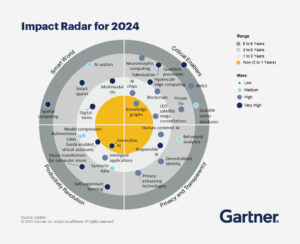In 1985, Excel revolutionized how businesses interacted with data. Nearly four decades later, it’s still a beloved tool—but love alone can’t scale. When your teams spend more time reconciling spreadsheets than unlocking insights, it’s time to ask: Are you letting legacy tools limit your future?
The Problem: Excel’s Hidden Costs
Excel is the Swiss Army knife of business tools: versatile, familiar, and deceptively simple. But as organizations grow, so do its shortcomings:
- Version Control Chaos: “Is this the final draft?” becomes a daily refrain as teams email conflicting spreadsheets.
- Manual Bottlenecks: Hours lost to copy-pasting data, formatting cells, and debugging broken formulas despite all the enhancements to modernise excel.
- Scalability Limits: Crash-prone files struggle with datasets even before they get to the million row capacity.
- Security Risks: Sensitive data lives in unsecured, locally stored files.
A recent study found that 67% of decision-makers distrust insights derived from spreadsheets—and for good reason. At iAi Solutions, we’ve seen clients lose millions to inventory errors, missed forecasts, and compliance fines—all rooted in Excel’s fragility.
The Shift: From Spreadsheets to Scalable Insights
Modern analytics isn’t about abandoning Excel—it’s about elevating it. Here’s how forward-thinking organizations are bridging the gap:
1. Embrace Cloud-Native Platforms
Tools like Power BI, Tableau, and Snowflake offer:
- Real-Time Collaboration: One source of truth, accessible to all stakeholders.
- Automated Dataflows: Eliminate manual entry with connectors to ERP, CRM, and IoT systems.
- Scalability: Handle terabytes of data without crashing.
“A logistics client reduced reporting errors by 45% simply by migrating to a cloud-based dashboard—freeing their team to focus on strategic analysis, not data entry.”
2. Replace Excel Forms with Modern Alternatives
Excel is often used to create forms for data collection, but tools like Microsoft Forms, Google Forms, and Power Apps offer better solutions:
- Microsoft Forms/Google Forms: Simple, secure, and mobile-friendly forms that integrate directly with cloud platforms (e.g., SharePoint, Google Drive).
- Power Apps: Build custom apps for complex workflows (e.g., inventory management, field service reports).
Example: “A healthcare client replaced their Excel-based patient intake forms with Microsoft Forms. Nurses now submit data via tablets, which auto-populates into their EHR system—reducing errors by 30% and cutting admin time by half.”
3. Democratize Insights with Low-Code Tools
Platforms like Microsoft Power Platform empower “citizen developers” to:
- Build custom dashboards without loading already stretched IT teams further.
- Automate workflows (e.g., approval processes, alerts).
- Integrate AI models for predictive analytics.
4. Quantify the ROI of Modernization
- Time Saved: One finance team reclaimed 120 hours/month by automating Excel-based reconciliations.
- Risk Reduced: A healthcare provider avoided $2M in HIPAA fines by centralizing patient data in a secure cloud warehouse.
- Revenue Gained: A retailer boosted margins by 8% using real-time demand forecasting tools.
The iAi Solutions Approach
At iAi, we don’t just sell tools—we architect transitions. Our “Excel-to-Cloud Migration Framework” includes:
- Assessment: Identify high-pain, high-ROI processes stuck in spreadsheets.
- Pilot: Migrate one workflow (e.g., budget planning) to a cloud platform.
- Scale: Expand across teams with governance and training.
Client Story: “A manufacturing CFO clung to Excel for financial forecasting—until a single formula error caused a $500K overspend. In 9 weeks, we migrated their models to Power BI, enabling real-time scenario analysis. Errors dropped by 70%, and the board finally trusted the numbers.”
Security: Excel’s Silent Killer
Spreadsheets pose hidden risks that even tech-wary teams can’t ignore:
- No Encryption: Excel files lack built-in encryption, exposing sensitive data.
- Access Chaos: Shared via email, stored on desktops—no audit trails.
- Compliance Failures: GDPR/HIPAA violations from accidental data leaks.
Modern platforms like Power Apps, Microsoft Forms, and Snowflake offer:
- Role-Based Access: Control who sees, edits, or shares data.
- Encryption: Data protected at rest and in transit.
- Audit Logs: Track every change, always.
Next week, we’ll explore how to turn your first 90 days of analytics modernization into a $1M+ efficiency gain. Follow us, to stay ahead.
Ready to leave spreadsheet chaos behind?
👉 Download our Excel-to-Cloud Migration Guide.
Tag a colleague who needs this!




